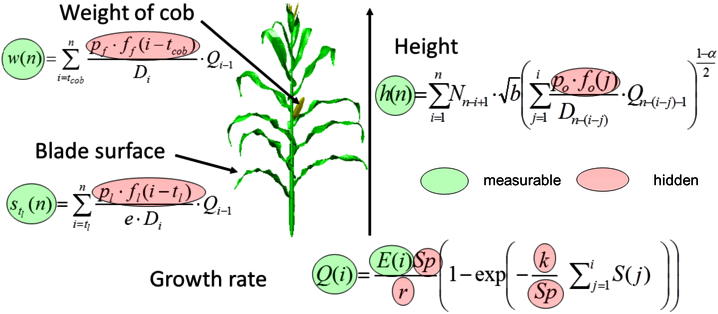Applications
Measurements
Parameter identification - Measurable and hidden parameters
Measurable and hidden parameters
-
The key step for model application is its validation on real plants,
by estimating the specific parameters of a given plant variety from experimental data.
- the sink fonctions φorgan ( expressed here as a product of a conversion factor porgan by a normalized sink function forgan)
- plant Water Use efficiency (1/r)
- plant projected area: Sp
- the Beer Law extinction coefficient: k
Some model parameters can be measured, while some cannot be directly assessed from experimental observations.
This concerns both development (when the rules of organogenetic grammars are too complex) and growth (such as the parameters of the sink and source functions).
These hidden parameters have to be estimated by model inversion.

Hidden and measurable data on maize (image Y. Guo and Y.T. Ma, CAU)
-
On maize, the organogenetic grammar is simple, without branching.
Growth cycles can be identified from leaf appareance.
Cob weight, total blade aera, and plant height, at various cycles, define measurable parameters.
Fresh plant weight increase are also a (destructive) measurable value.
The E fonction, related to climatic and resource conditions, is also found from measurable values.
Allometric parameters bb and α, as well as leaf thickness e, can be retrieved simply from measurements taken on trunk internodes and leaves respectively.
Hidden parameters are:
